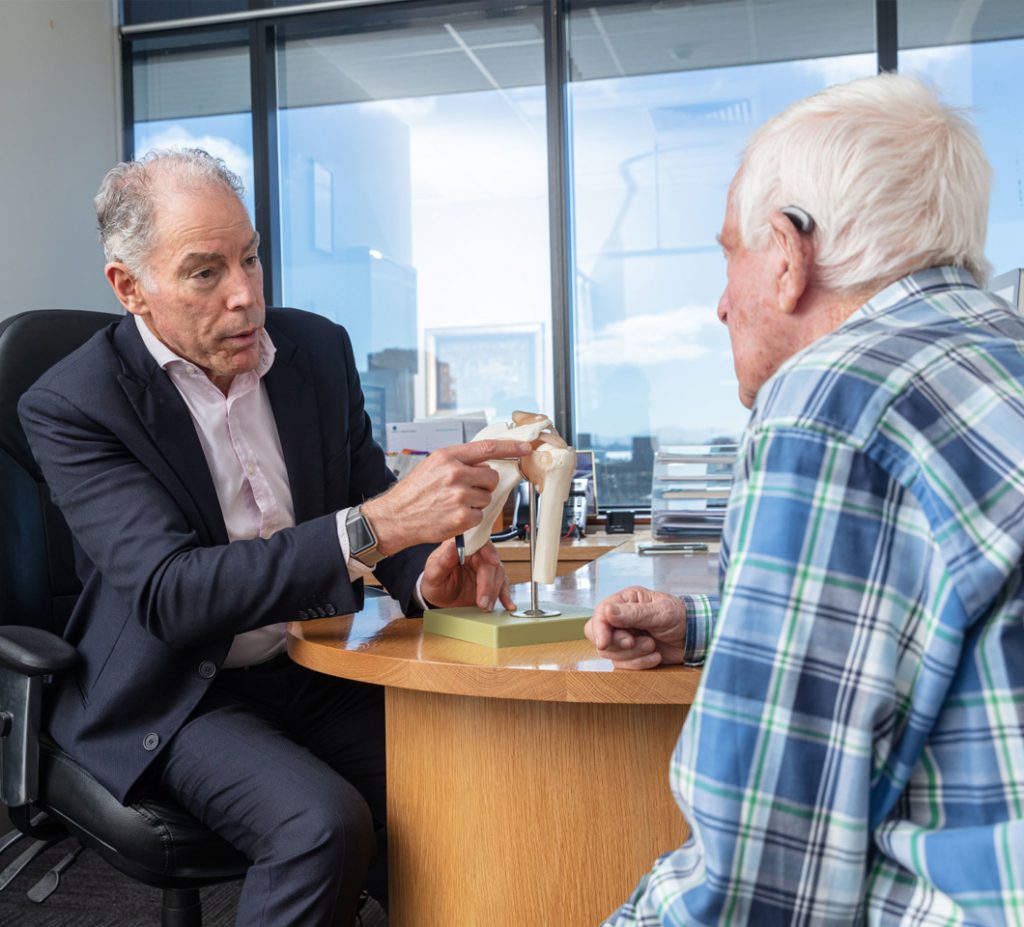Shoulder Arthritis Treatment
NON-SURGICAL TREATMENT
Gentle strengthening
Loss of muscle mass starts in our thirties and worsens as we age. Arthritis will compound the problem. An appropriate exercise program may help strengthen your shoulder and arm, and improve its function. A physiotherapist can facilitate a strengthening program
Once lost, shoulder movement is hard to restore. However, maintaining the existing range of motion is important.
MEDICATION
Medications may be required to help with the arthritic pain. Paracetamol is the recommended first-line analgesic. Paracetamol is useful for an acute flare of pain, or more regularly, as the arthritis worsens. Nonsteroidal anti-inflammatory drugs (NSAIDs) can be helpful for short term use. Because of potential side effects, use caution for people with heart, kidney and gastrointestinal conditions. Therefore please discuss with your family doctor before using. COX-2 inhibitors such as Celebrex can be tried and are often better tolerated.
More potent analgesics such as opioid-containing drugs should be used cautiously and only for a short duration. Surprisingly they are often not that helpful for the pain of arthritis.

Cortisone injections into the joint can be helpful for some people, mainly if there is an inflammatory component to the arthritis. The duration of benefit of a cortisone injection is variable. They also tend to be less effective with repeated injections.
There are also many treatments purported to help or “cure” arthritis, but there is little evidence for their use. Glucosamine and chondroitin are two of the building blocks of cartilage. Although widely used, their benefit remains unproven. There is no scientific substantiation for many other heavily advertised supplements. Stem cell therapy is a costly and heavily promoted procedure with little evidence of its clinical benefit.
Call us on (03) 5223 3151 Book an appointment today.
SURGICAL TREATMENT
SHOULDER REPLACEMENT
Shoulder replacement (or shoulder arthroplasty) has become the treatment of choice for people with end-stage shoulder arthritis. It is a significant procedure. It involves removing the worn-out articular cartilage and then resurfacing the shoulder with metal and plastic components. Before your shoulder replacement, further imaging is required to determine the best option. A CT scan assesses bone loss and the shape of the glenoid socket. An MRI or ultrasound looks at the presence of rotator cuff damage.
There are two main types of shoulder replacement, “anatomic” and “reverse”. With an anatomic replacement, a plastic socket resurfaces the arthritic socket. A metallic ball attached to a stem that secures it into the humerus bone replaces the head of the humerus. As its name implies, a reverse shoulder replacement replaces the socket with a ball and top of the humerus with a socket. Reverse shoulder replacements are now the most standard variety performed in Australia.


